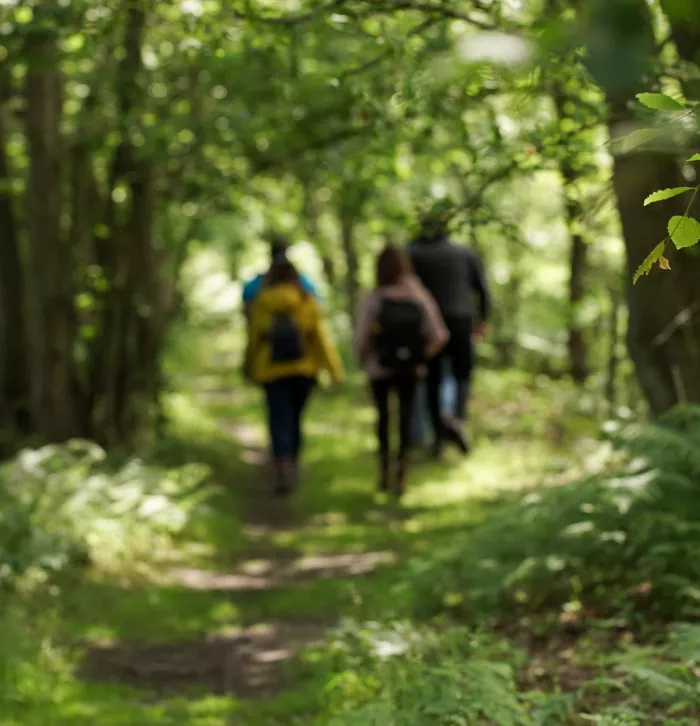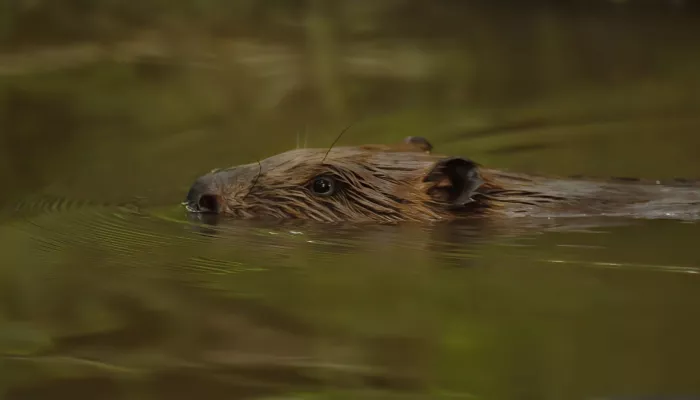A little about beavers
The Eurasian beaver (Castor fiber) is a medium-sized mammal that is semi-aquatic, like the otter. They mostly live in water, but forage both in water and on land. They are vegetarians and eat over 300 species of plants, including lots of invasive species introduced to Britain.
Beavers are known as 'ecosystem engineers' or a 'nature-based solution' because they create and affect the habitats they live in, benefitting other wildlife and people.
For example, when beavers build dams, this slows and cleans the water. This means that, during periods of heavy rain, less water flows downstream, reducing flooding and creating wet woodlands and ponds. These new habitats also act as carbon sinks helping to slow climate change. Beavers also create new habitats that benefit other species, like invertebrates, bats, and endangered species such as water voles.
The History of Beavers at Ham Fen
At the tail end of the last century, Kent Wildlife Trust recognised the importance of beavers as natural engineers to help restore wetlands. The Trust developed a plan to establish a contained colony of beavers at Ham Fen Nature Reserve to demonstrate how they could be effectively used to naturally manage and enhance a wetland reserve.
In 2000, work began on gaining legal consents for a project that had never been undertaken before, with an animal that was last seen on British shores over 400 years ago.
After much hard work, in 2001, the point was reached when two families of beavers, a gift from the Norwegian government, were brought over to Kent and went into quarantine with our project partners at the Wildwood Trust. Unfortunately, a last-minute bureaucratic curve ball meant the project was in jeopardy. The Trust battled hard to seek the release of the beavers onto Ham Fen, ultimately meeting with then Minister for DEFRA, Michael Meacher, to plead the beaver’s case. Fortunately, common sense prevailed and the beavers were finally released onto the reserve in 2003.
After an initial stay in “soft release” pens to monitor their welfare and acclimatise them to their new surroundings, the two family groups were released onto separate sections of the reserve. Their activities, including coppicing and felling trees, dam and pool creation demonstrated that they were delivering the positive impacts that the Trust knew they were capable of. In 2008, an additional family group from Germany was released onto the reserve to help continue the project and ensure genetic diversity within Ham Fen’s beaver population.
After nearly 20 years of being on the reserve, the positive impacts of the beaver’s work are clear to see. Water levels are higher, helping to restore areas of peat fen which are so valuable in locking up carbon. The combined rise in water levels coupled with the beaver’s natural coppicing has lead to a diverse mosaic of open areas and scrub that provides the best conditions for fenland wildlife.
Beavers are now part of our wild biodiversity in East Kent. We hope that you are lucky enough to see one of these secretive animals!
Enjoy an early evening walk along a river and listen out for a tail splash on the water then watch out for a passing beaver.
Winter is the best time of year to see beaver, as the vegetation is lower and more chance of spotting them.

Beaver citizen scientist programme
In 2022, Kent Wildlife Trust in collaboration with the Beaver Trust established a beaver citizen scientist programme, providing opportunities for local people from across Kent to learn about beaver ecology and be trained on how to survey for beaver signs. Join the growing team of beaver citizen scientists across Kent, book onto a beaver study day to receive training and come join the group.
East Kent Beaver Advisory Group (EKBAG)
EKBAG was established in 2019 and is a collaboration between Kent Wildlife Trust, Environment Agency, Natural England, Wildwood Trust, Internal Drainage Board, Kent Countryside Partnership, National Farming Union, Beaver Trust, Kent County Council, RSPB, National Highways, Network Rail, and Forestry England. This group is neutral and works towards creating harmonious coexistence between beavers and people.
EKBAG will be running and attending events and workshops throughout 2024 to engage and support local people to coexist with beavers. Please check back here!
If you want to talk to us about beavers on your land or you wish to report a sighting of a beaver or signs of beavers, please contact us: beavers@wildlifegateway.org.uk
If you wish to know more about beaver management groups or are looking for more information about beavers and mitigation advice, please visit the beaver management groups website, which has additional resources.
Frequently Asked Questions
Beavers are vegetarians and eat over 300 species of plants.
Yes, they are native and belong in our natural ecosystems, but humans caused their extinction.
Lodges are built out of woody materials and are often found on the side of a river bank. Beavers use them to keep safe; they eat, sleep and look after their family in them.
Burrows are holes and sometimes a network of tunnels with chambers, dug into the river bank. Beavers can also eat, sleep and raise their kits in burrows.
Beavers like consistent water levels so they build a dam to help regular water flow and create wetland habitats to keep them safe from predators.
Kits are very vulnerable to predation by a range of species.

